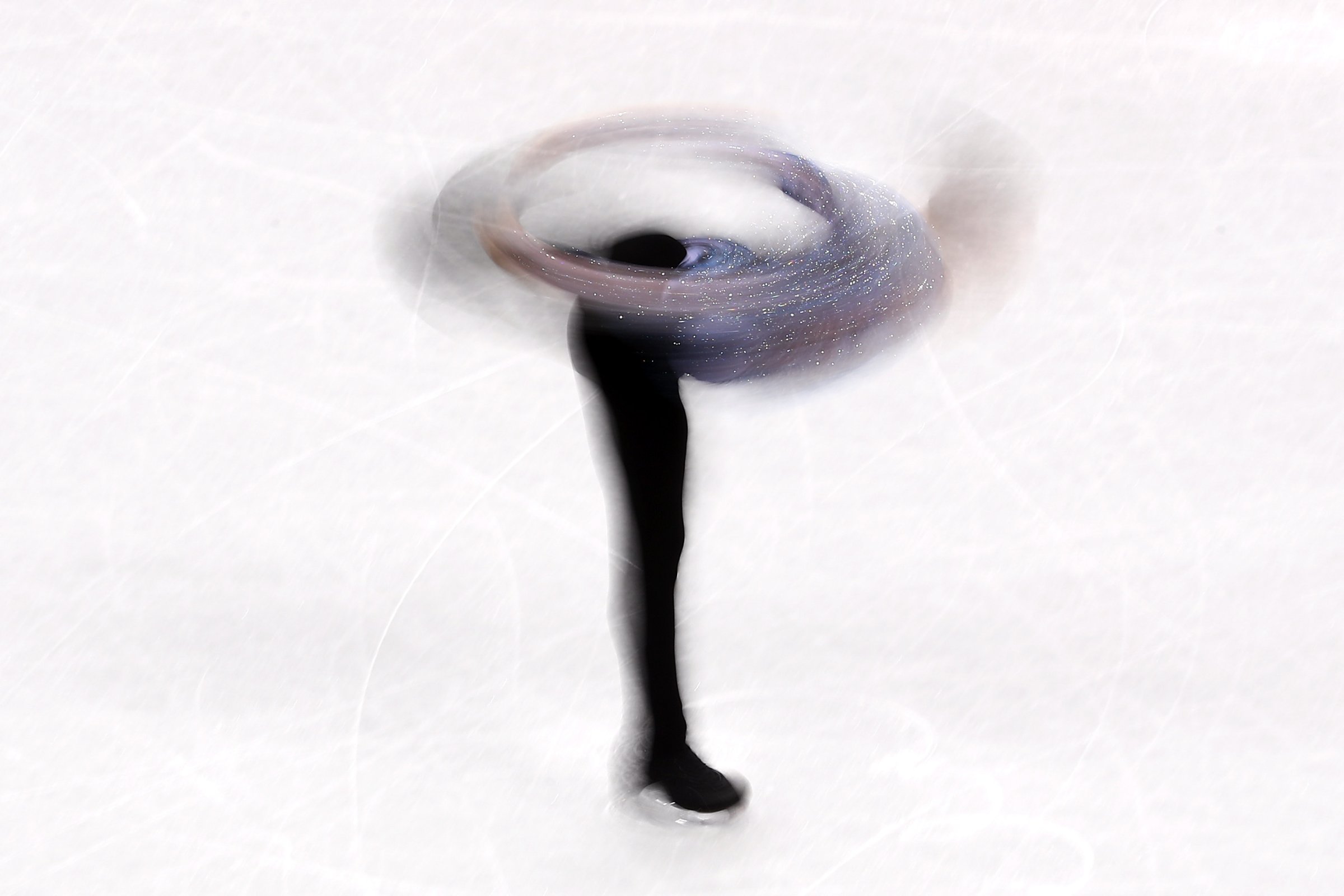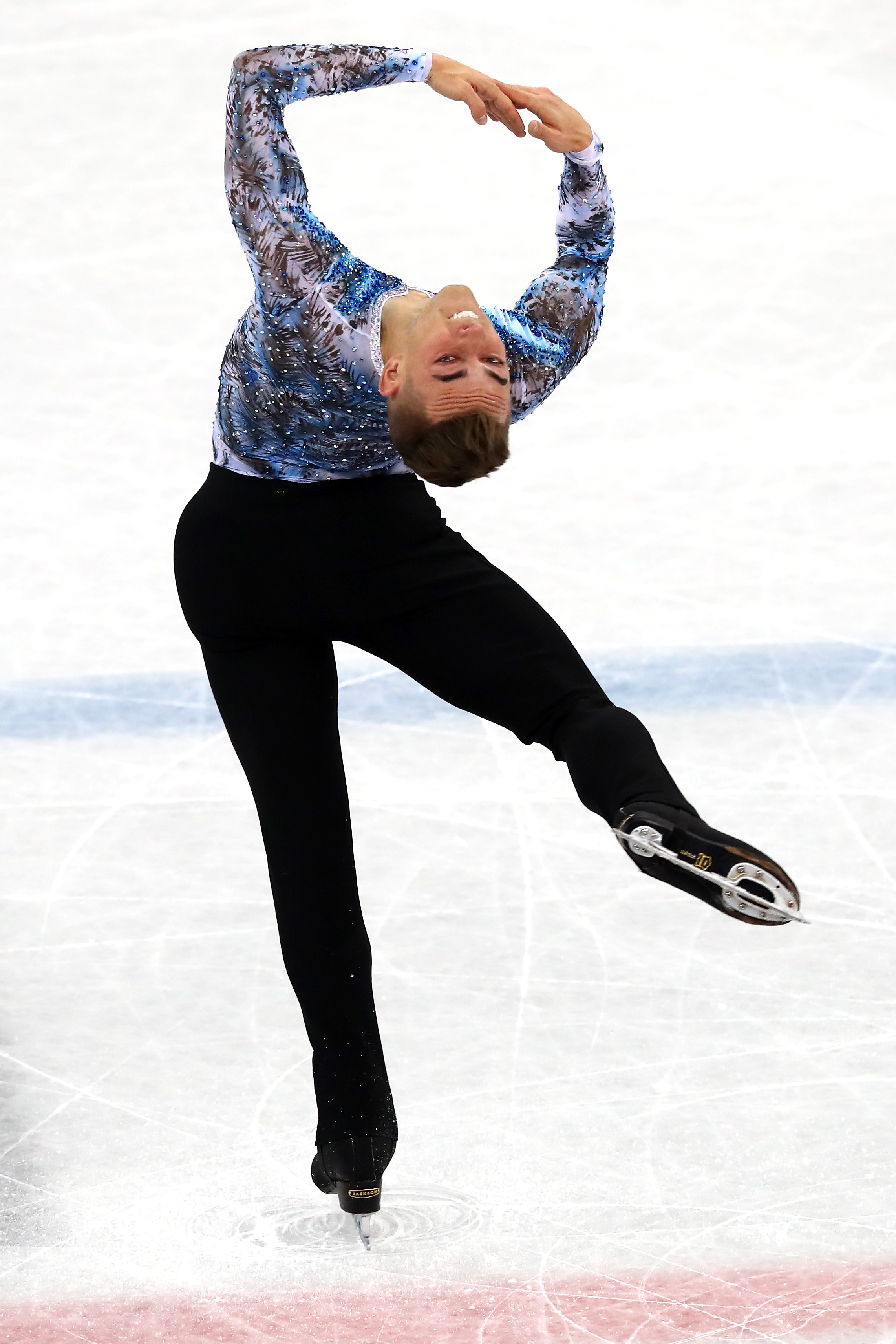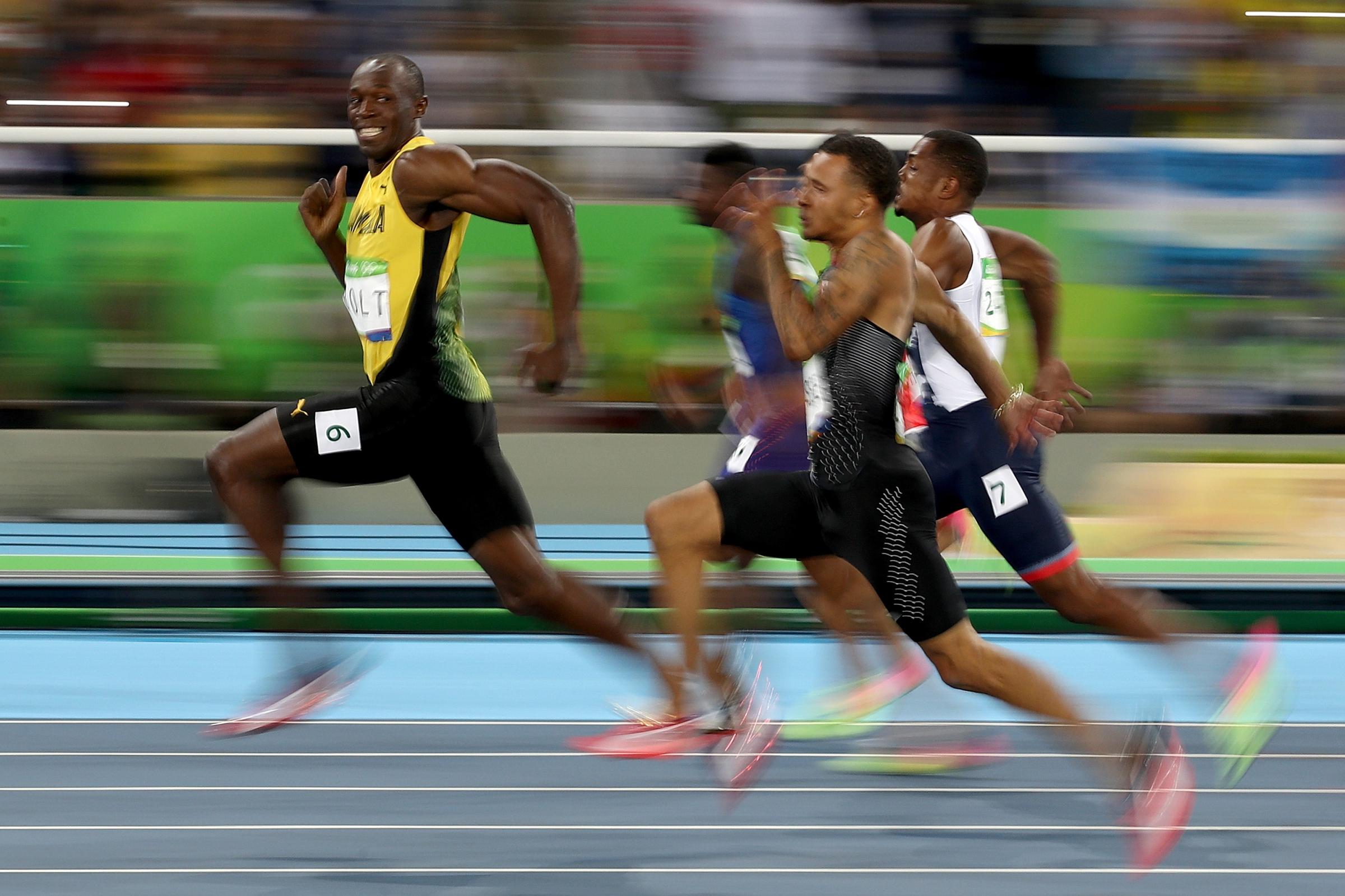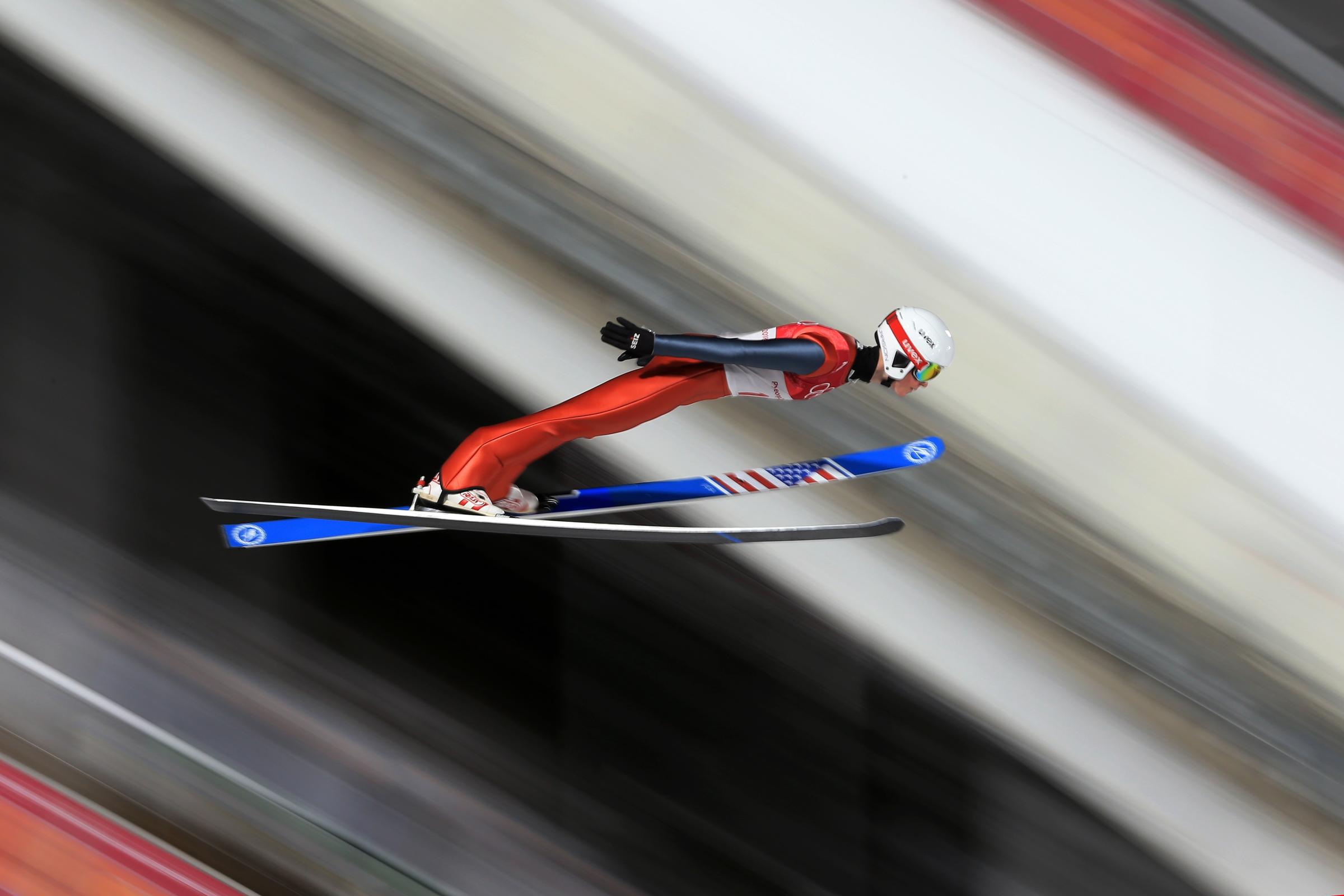
While you’re busy watching the ice skaters, hockey players, snowboarders and other athletes go for gold at the 2018 Winter Olympics, there’s another competition happening behind the scenes: Photographers jostling for the top shots that’ll appear on newspaper front pages and website homepages across the world.
Getty Images photographer Dean Mouhtaropoulos made one such captivating image on Monday — capturing Team USA figure skater Adam Rippon in a whirlwind blur of a spin during the Men’s Single Free Skating event.
Mouhtaropoulos’ image of Rippon deservingly made the rounds on social media, with commentators crediting the photographer with capturing the grace of Rippon’s routine.
But how did Mouhtaropoulos make the image of Adam Rippon?
The image is an example of what’s called a long exposure photograph. Whereas sports photographers often seek to freeze the action with shutter speeds like 1/4000th of a second, Mouhtaropoulos was likely using a much longer shutter speed — probably something like 1/60th of a second, depending on the lighting in the rink. (“Shutter speed” refers to the length of time that a camera’s shutter is open, allowing the camera to collect light to make a photograph. Shorter shutter speeds freeze action, while longer shutter speeds are useful in nighttime landscape photography and to make abstract images like Mouhtaropoulos’ shot.)
Something around 1/60th of a second would have been long enough to capture Rippon’s spin as an almost magical-looking blur. But because Rippon is spinning on a stationary spot on the ice, it’s also still short enough to make an image that still looks like a figure skater rather than an altogether unidentifiable mess. The big challenge for Mouhtaropoulos would have been keeping his camera steady while shooting at a longer than usual shutter speed. He may have been using a tripod or, more likely for sports photographers, a monopod to get the job done.
For comparison’s sake, here’s an image of Adam Rippon during a similar performance, taken at a more commonly used shutter speed:

The long-exposure technique is similar to the one that photographer Cameron Spencer used to take this now-famous photo of Jamaican runner Usain Bolt during the 2016 Olympics in Brazil. But in Spencer’s case, because Bolt was running from right to left, he would have had to “pan” his camera to match Bolt’s position, keeping Bolt sharp but giving a wonderful sense of motion in the background and in Bolt’s record-setting legs.

Many Olympic photographers have taken to using a similar technique during the ski jumping events, too:

More Must-Reads from TIME
- Donald Trump Is TIME's 2024 Person of the Year
- Why We Chose Trump as Person of the Year
- Is Intermittent Fasting Good or Bad for You?
- The 100 Must-Read Books of 2024
- The 20 Best Christmas TV Episodes
- Column: If Optimism Feels Ridiculous Now, Try Hope
- The Future of Climate Action Is Trade Policy
- Merle Bombardieri Is Helping People Make the Baby Decision
Contact us at letters@time.com